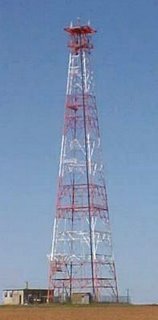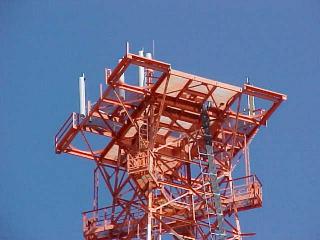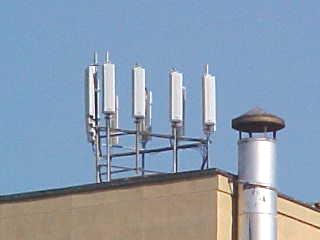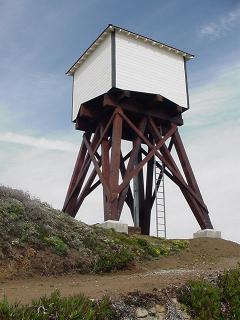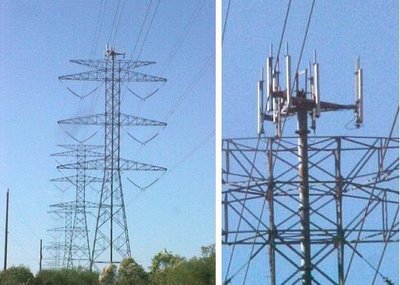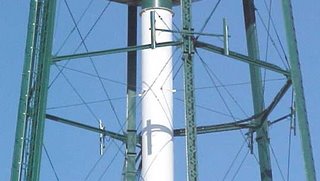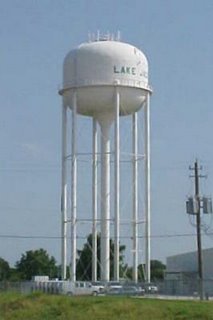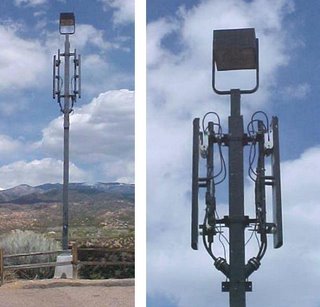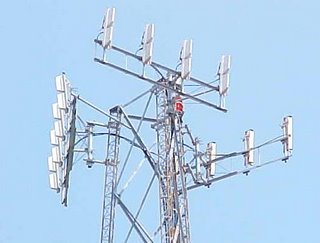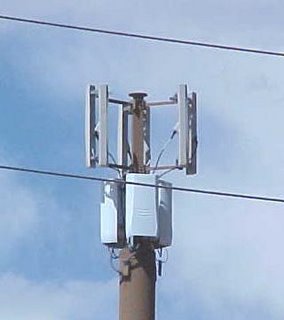
 This tower supports intercity microwave relay antennas on the top platform, and cellular/PCS antennas side-mounted below the platform. The tower itself, a four-leg square skeletal structure, is typical of the towers that AT&T's Long Lines department constructed for long distance voice service back in AT&T's "Bell System" days, before the 1984 divestiture.
This tower supports intercity microwave relay antennas on the top platform, and cellular/PCS antennas side-mounted below the platform. The tower itself, a four-leg square skeletal structure, is typical of the towers that AT&T's Long Lines department constructed for long distance voice service back in AT&T's "Bell System" days, before the 1984 divestiture.Like all towers built by Long Lines, it's an exceedingly solid structure, designed to support large, high-gain microwave antennas. These antennas have very narrow beamwidths, requiring extremely rigid support to prevent beam-aim errors under severe weather (high wind and/or ice buildup) conditions.
